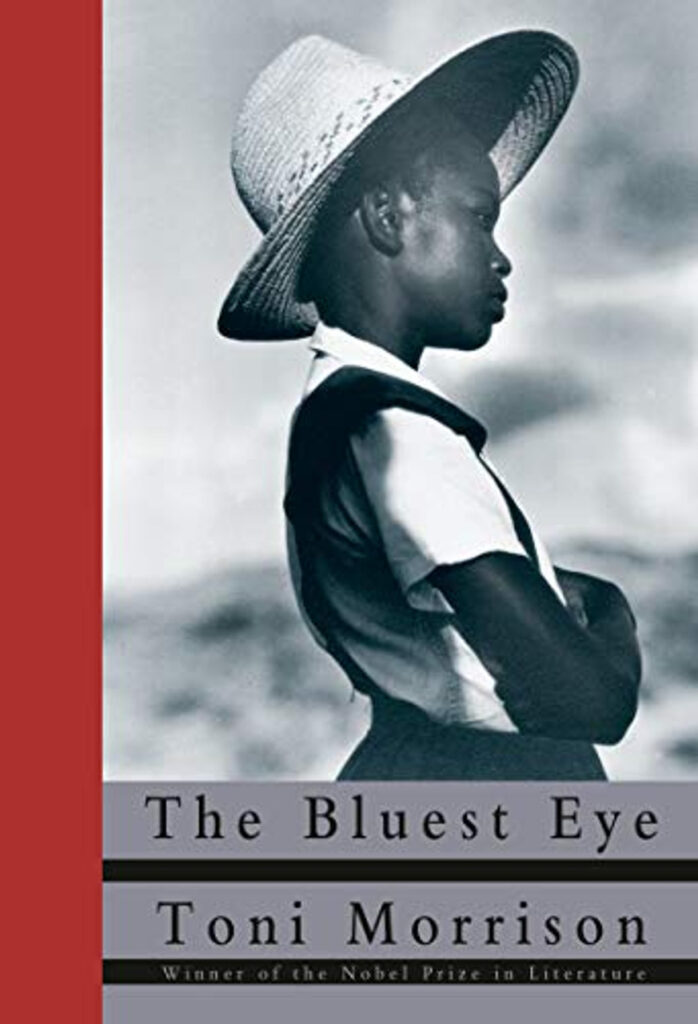Note: If you wish to receive, via e-mail, (1) my weekly newsletter or (2) daily copies of these posts, notify me at rrbates1951@gmail.com and indicate which you would like. I promise not to share your e-mail address with anyone. To unsubscribe, send me a follow-up email.
Thursday
When Ohio’s fetal heartbeat law went into effect upon the U.S. Supreme Court’s reversal of Roe v Wade, a ten-year-old rape victim was forced to go to neighboring Indiana for an abortion (!). While I took note of the story at the time, I missed making a connection with Ohio’s greatest author. Toni Morrison’s first novel, The Bluest Eye, is about an 11-year-old is also impregnated, in her case by her father.
Like the Ohio child, Pecola Breedlove does not have abortion as an option, the story having been set in the 1930s. Instead, the baby comes prematurely and dies while Pecola herself goes mad. Her fostering sister Claudia reports,
The damage done was total. She spent her days, her tendril, sap-green days, walking up and down, up and down, her head jerking to the beat of a drummer so distant only she could hear. Elbows bent, hands on shoulders, she flailed her arms like a bird in an eternal, grotesquely futile effort to fly. Beating the air, a winged but grounded bird, intent on the blue void it could not reach—could not even see—but which filled the valleys of the mind.
Initially ostracized because she is unattractive, Pecola thinks that having blue eyes like Shirley Temple would make people love her. After the rape has driven her mad, she even thinks that her eyes have in fact turned blue, with the fantasy becoming a kind of refuge. But for Claudia, her plight is a condemnation of society, which has long scapegoated her so that it could feel better about itself:
All of us—all who knew her—felt so wholesome after we cleaned ourselves on her. We were so beautiful when we stood astride her ugliness. Her simplicity decorates us, her guilt sanctified us, her pain made us glow with health, her awkwardness made us think we had a sense of humor. Her inarticulateness made us believe we were eloquent. Her poverty kept us generous. Even her waking dreams we used—to silence our own nightmares. And she let us, there thereby deserved our contempt. We honed our egos on her, padded our characters with her frailty, and yawned in the fantasy of our strength.
So how do forced-birth advocates feel when presented with a Pecola situation? Well, we know that many of them initially claimed that the Ohio story was a hoax, although they went silent when the rapist was caught and, last month, found guilty and sentenced.
Once it was clear that the story was not a hoax, they then moved to a second rationalization John Stoehr of The Editorial Board, who has studied the mindset of Calvinist fundamentalists, explains that they write off such hard cases as God’s will:
The teachings of Jesus – “turn the other cheek” – subvert the self-interests of conservatives, who must divide the world between those who are “saved” and those who are damned. They must cling to punishment because punishment explains and rationalizes the surrounding reality.
Why are there poor people in America? Why do Black people suffer most? Why do so many hard-working people struggle to make ends meet? They must have done something to deserve their lot in life. And because they deserve it, there’s nothing to be done. It’s God’s will.
Stoehr also notes that seeing the world this way serves to preserve privilege, which is why many forced-birth advocates also oppose contraception. Preventing women from making their own reproductive choices is a way of controlling them. If the Pecola Breedloves of the world pay the price for their power grab—well, that’s for God to sort out.
By giving us three-dimensional depictions of people whom society otherwise stereotypes or ignores, novels function as an implicit rebuke to such thinking. Maybe that’s one reason why Bluest Eye is being banned in schools across the country. The same people that think it’s okay for a 10-year-old to have a baby don’t want high school students to read about it happening. This too is about control.
The good news is that Ohio voters may well, in November, enshrine abortion rights in the state’s constitution, wresting control back from the rightwing state legislature. Even in red states, the forces of reaction don’t always win.
Another case – Historian Heather Cox Richardson has just alerted me to another recent case, about a
13-year-old Mississippi girl who just gave birth after being raped by a stranger in her yard. She was unable to obtain an abortion because of Mississippi’s abortion ban. She is scheduled soon to start seventh grade.
Meanwhile, rightwing judges are going after the abortion drug mifepristone, approved in 2000 by the Food and Drug Administration. If they can’t ban it, they want to at least severely restrict its use “by saying it could not be sent through the mail or prescribed without an in-person visit to a doctor, cutting midwives and other healthcare providers out of the process.”
A Trump judge, seeking to ban mifepristone altogether, said that doctors suffer moral and aesthetic injury when they have to participate in any way with an abortion. In his minority opinion he quoted a doctor who wrote that he is harmed when he “lose[s] the opportunity…to care for the woman and child through pregnancy and bring about a successful delivery of new life.”
As abortion centers are shuttered, we are going to have more and more Pecola Breedloves.


